
How to Use Gravity: Digital 16A Relay Module: Examples, Pinouts, and Specs
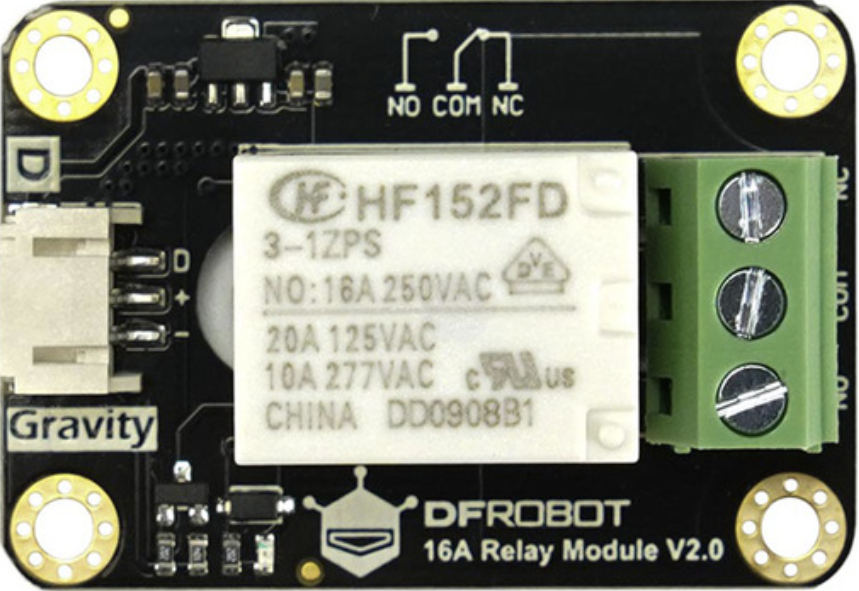
 Design with Gravity: Digital 16A Relay Module in Cirkit Designer
Design with Gravity: Digital 16A Relay Module in Cirkit DesignerIntroduction
The Gravity: Digital 16A Relay Module (Manufacturer Part ID: DFR0251) by DFROBOT is a versatile and reliable relay module designed to control high-voltage devices using low-voltage digital signals. With a maximum current handling capacity of 16A, this module is ideal for applications in home automation, industrial control systems, and IoT projects. Its compatibility with microcontrollers like Arduino makes it a popular choice for hobbyists and professionals alike.
Explore Projects Built with Gravity: Digital 16A Relay Module
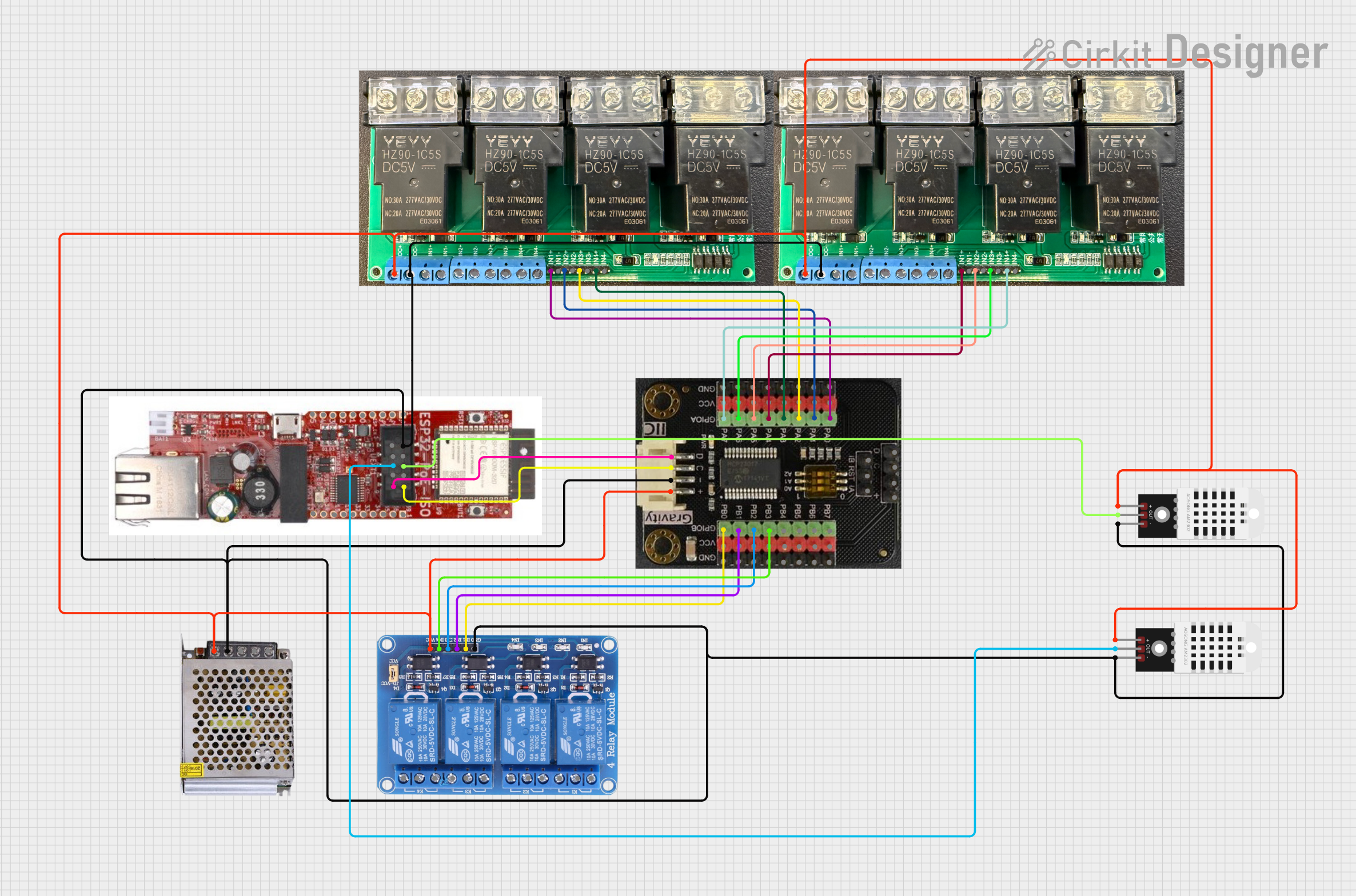
 Open Project in Cirkit Designer
Open Project in Cirkit Designer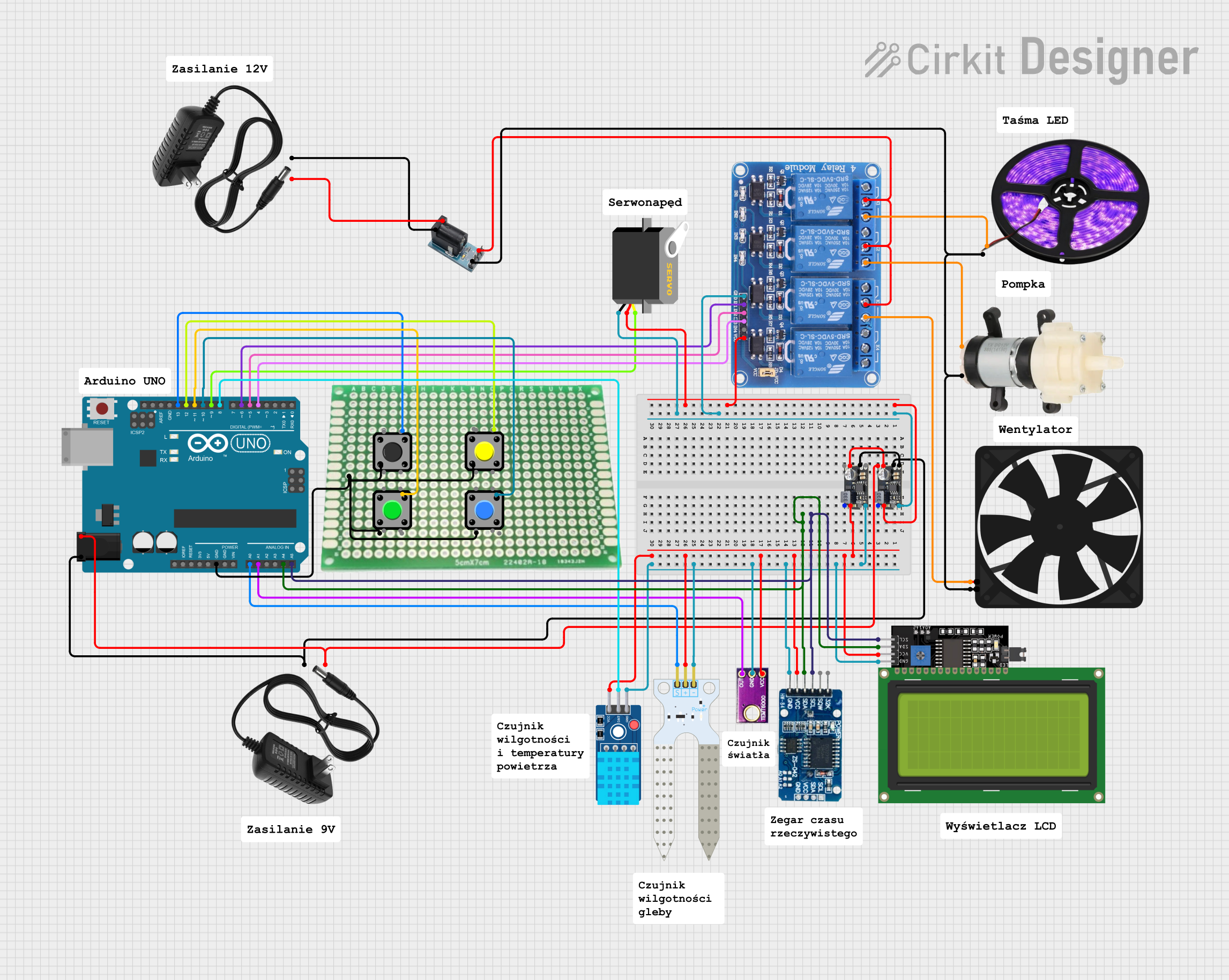
 Open Project in Cirkit Designer
Open Project in Cirkit Designer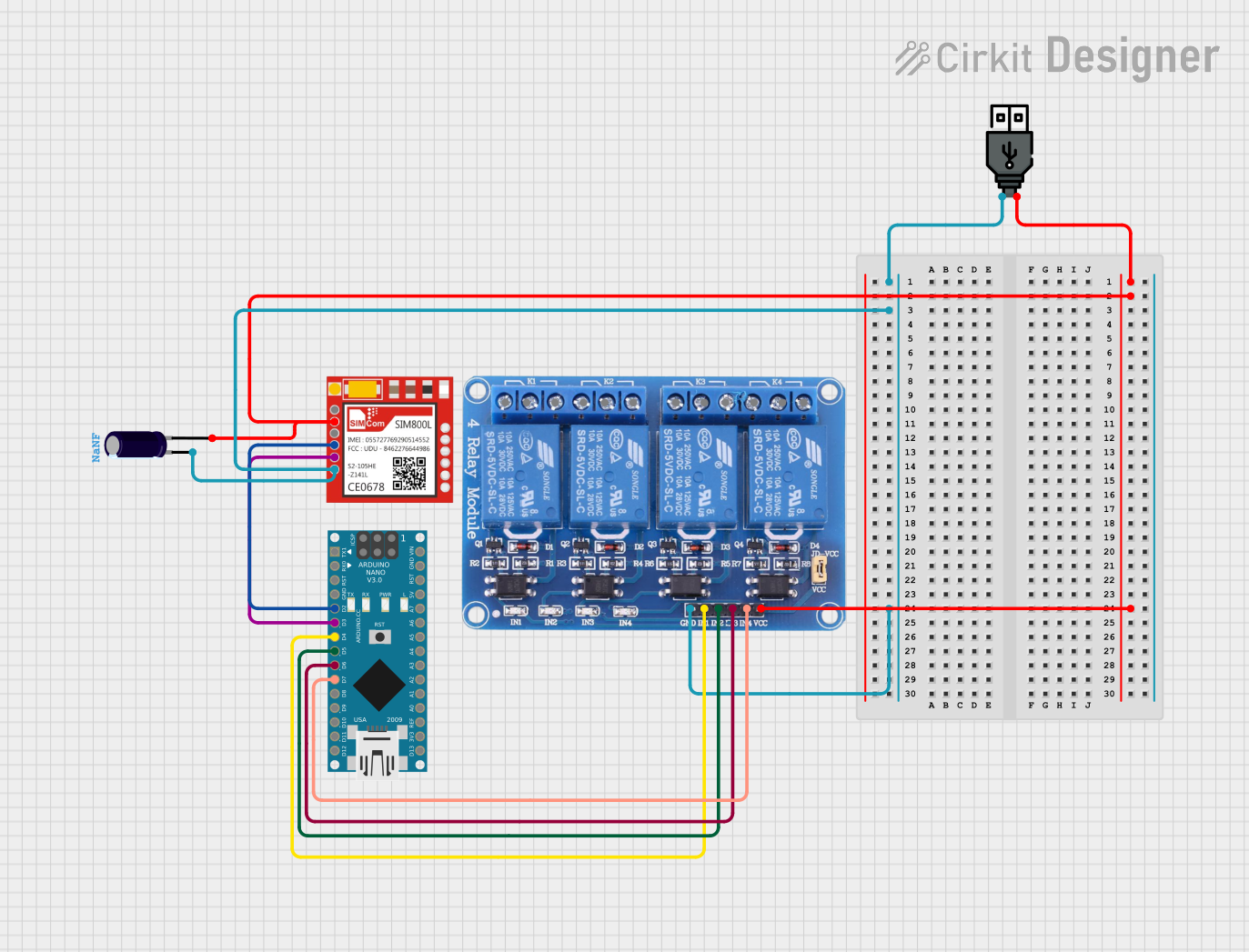
 Open Project in Cirkit Designer
Open Project in Cirkit Designer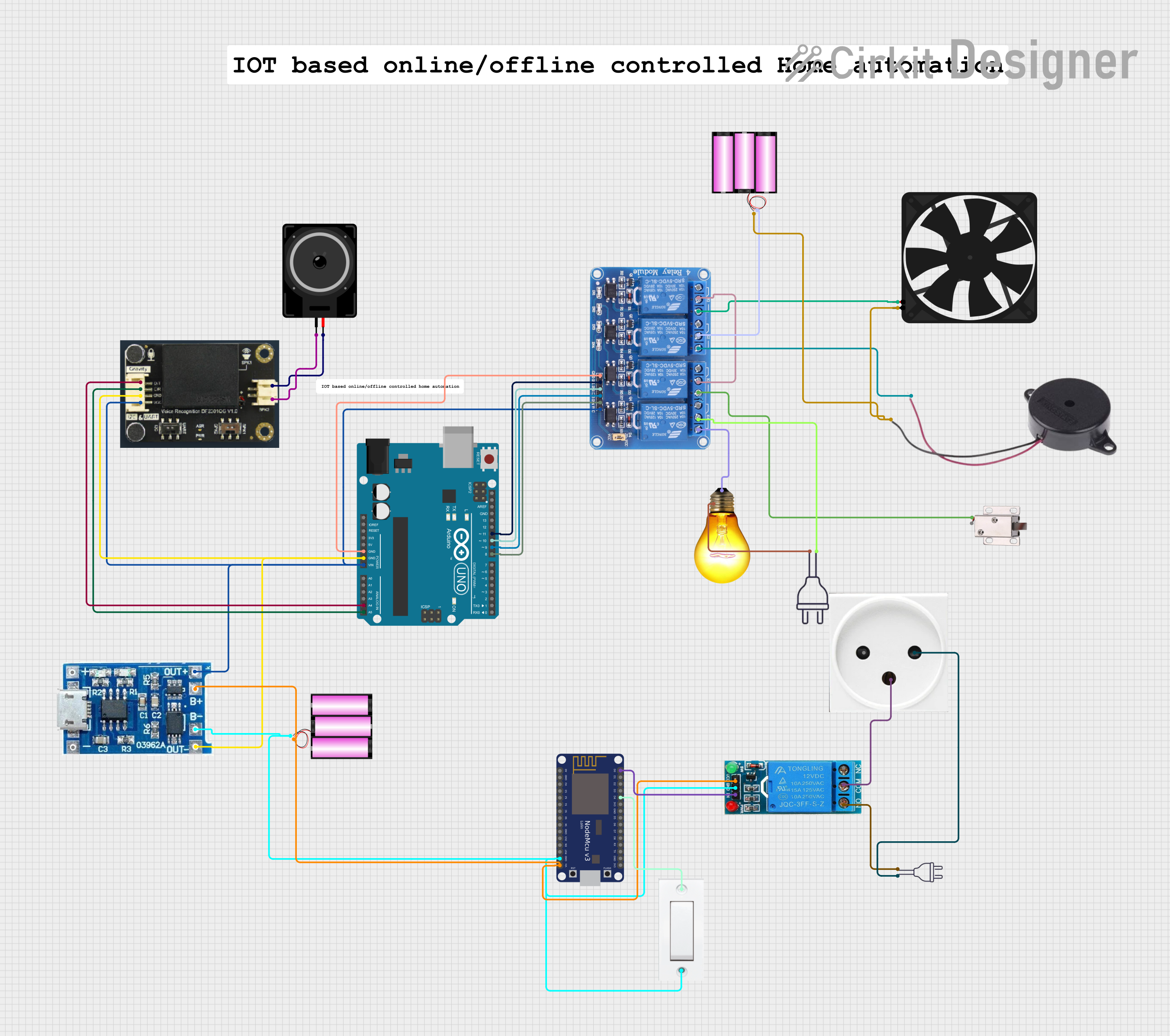
 Open Project in Cirkit Designer
Open Project in Cirkit DesignerExplore Projects Built with Gravity: Digital 16A Relay Module

 Open Project in Cirkit Designer
Open Project in Cirkit Designer
 Open Project in Cirkit Designer
Open Project in Cirkit Designer
 Open Project in Cirkit Designer
Open Project in Cirkit Designer
 Open Project in Cirkit Designer
Open Project in Cirkit DesignerCommon Applications
- Home automation (e.g., controlling lights, fans, or appliances)
- Industrial equipment control
- IoT-based smart systems
- Robotics and automation projects
- High-power device switching
Technical Specifications
Below are the key technical details of the Gravity: Digital 16A Relay Module:
| Parameter | Specification |
|---|---|
| Operating Voltage | 5V DC |
| Trigger Voltage | 2.5V - 5V DC |
| Maximum Load Current | 16A |
| Maximum Load Voltage | 250V AC / 30V DC |
| Control Signal Type | Digital |
| Relay Type | SPDT (Single Pole Double Throw) |
| Dimensions | 37mm x 32mm |
| Weight | 20g |
Pin Configuration
The module has a simple pin layout for easy integration into your projects:
| Pin | Name | Description |
|---|---|---|
| 1 | Signal (S) | Digital input signal to control the relay (connect to microcontroller GPIO pin) |
| 2 | VCC | Power supply input (5V DC) |
| 3 | GND | Ground connection |
| 4 | NO (Normally Open) | Connect to the device you want to control; remains open until relay is triggered |
| 5 | COM (Common) | Common terminal for the relay |
| 6 | NC (Normally Closed) | Connect to the device you want to control; remains closed until relay is triggered |
Usage Instructions
How to Use the Component in a Circuit
- Power the Module: Connect the
VCCpin to a 5V DC power source and theGNDpin to ground. - Control Signal: Connect the
Signal (S)pin to a digital GPIO pin of your microcontroller (e.g., Arduino). - Load Connection:
- For devices that should remain off by default, connect them to the
NO(Normally Open) terminal andCOMterminal. - For devices that should remain on by default, connect them to the
NC(Normally Closed) terminal andCOMterminal.
- For devices that should remain off by default, connect them to the
- Trigger the Relay: Send a HIGH signal (5V) to the
Signal (S)pin to activate the relay and switch the connected device.
Important Considerations and Best Practices
- Isolation: Ensure proper electrical isolation between the high-voltage side (load) and the low-voltage control side to prevent damage to your microcontroller.
- Current Rating: Do not exceed the maximum current rating of 16A to avoid overheating or damage to the relay.
- Flyback Diode: If controlling an inductive load (e.g., motors), use a flyback diode across the load to protect the relay from voltage spikes.
- Secure Connections: Use proper connectors or soldering to ensure secure and reliable connections.
Example: Using with Arduino UNO
Below is an example of how to use the Gravity: Digital 16A Relay Module with an Arduino UNO to control a light bulb:
Circuit Connections
- Connect the
Signal (S)pin of the relay module to Arduino digital pin 7. - Connect the
VCCpin of the relay module to the 5V pin on the Arduino. - Connect the
GNDpin of the relay module to the GND pin on the Arduino. - Connect the light bulb to the
NOandCOMterminals of the relay module. - Power the Arduino and the relay module.
Arduino Code
// Define the relay pin
const int relayPin = 7;
void setup() {
// Set the relay pin as an output
pinMode(relayPin, OUTPUT);
// Ensure the relay is off at startup
digitalWrite(relayPin, LOW);
}
void loop() {
// Turn the relay on (light bulb ON)
digitalWrite(relayPin, HIGH);
delay(5000); // Keep the light ON for 5 seconds
// Turn the relay off (light bulb OFF)
digitalWrite(relayPin, LOW);
delay(5000); // Keep the light OFF for 5 seconds
}
Troubleshooting and FAQs
Common Issues and Solutions
Relay Not Switching
- Cause: Insufficient trigger voltage or incorrect wiring.
- Solution: Ensure the
Signal (S)pin receives a voltage between 2.5V and 5V. Double-check all connections.
Load Not Turning On/Off
- Cause: Incorrect connection to the
NO,NC, orCOMterminals. - Solution: Verify the load is connected to the correct terminals based on your desired behavior (normally open or normally closed).
- Cause: Incorrect connection to the
Overheating
- Cause: Exceeding the maximum current rating of 16A.
- Solution: Ensure the load current does not exceed 16A. Use a heat sink or cooling mechanism if necessary.
Microcontroller Resetting
- Cause: Voltage spikes from inductive loads.
- Solution: Add a flyback diode across the load to suppress voltage spikes.
FAQs
Q1: Can I use this relay module with a 3.3V microcontroller?
A1: Yes, the relay can be triggered with a voltage as low as 2.5V. However, ensure the VCC pin is still powered with 5V.
Q2: Is the module safe for controlling AC appliances?
A2: Yes, the module can handle up to 250V AC at 16A. Ensure proper insulation and safety precautions when working with high-voltage AC.
Q3: Can I control multiple relays with one Arduino?
A3: Yes, you can control multiple relay modules by connecting each Signal (S) pin to a separate GPIO pin on the Arduino.
Q4: What happens if I exceed the current rating?
A4: Exceeding the 16A current rating can damage the relay and may pose a fire hazard. Always stay within the specified limits.
By following this documentation, you can effectively integrate the Gravity: Digital 16A Relay Module into your projects for safe and reliable high-power device control.